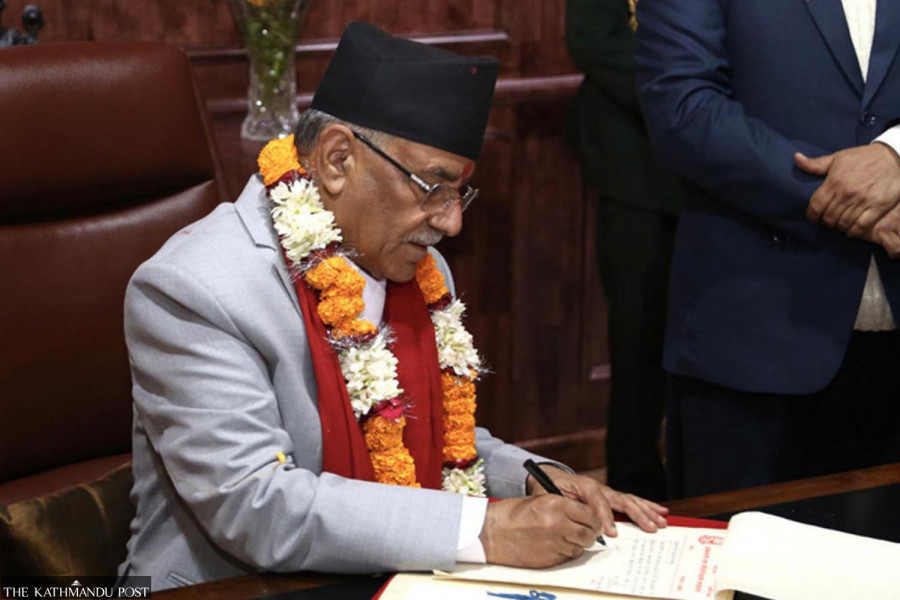Editorial
Stable instability
The Dahal government is far from ideal. But it is also hard to see how its replacement will be any better.
Just a month after Prime Minister Pushpa Kamal Dahal gave full shape to his Cabinet following months-long struggle, efforts are already underway to destabilise the government. Recent reports suggest major coalition partners are at odds. Ruling parties’ leaders now say that they are ready to change the coalition if need be. One of the government’s more vocal critics is Nepali Congress General Secretary Gagan Thapa, who has also put forth the idea of a change in the ruling coalition. Some others have followed suit. But instability in Singha Durbar is something the country could do without right now.
In the past eight decades, Nepal has adopted, practiced and changed many political systems. Nepalis overthrew Rana oligarchy in 1951 and ushered in a multi-party democratic system for 18 months in early 1960s. After this, the monarchs experimented with the partyless Panchayat for three decades, after which multiparty democracy was reinstated in 1991. Then, people overthrew over 240-year old monarchy in 2006. Now we are in a federal democratic republic system with inclusive and participatory provisions. But all this while, one thing remained constant: unstable governments.
Impatience and lust for power seem to be in the DNA of Nepali leaders: Since the formation of the country’s first elected government under BP Koirala in 1959, Nepal has seen over 40 governments. Government leadership has changed hands 41 times (including reelections and reappointments of same prime ministers under the changed legal or political dispensations). To say this represents a failure of the political parties or multi-party system would be mistaken for we see that even during the Panchayat Nepal’s governments were hardly stable. Moreover, Nepali people have repeatedly given some political parties a clear majority. But none of them could serve out their full term. In the very first parliamentary elections in 1959, Nepali Congress got two-thirds majority. But just one and half years after the charismatic Congress leader BP Koirala became prime minister, King Mahendra not only sacked him but also ended multiparty democracy. But the monarch too couldn’t ensure stability.
Congress was again given a majority in the first parliamentary elections after reinstatement of multiparty democracy in 1991, and then again in 1999. But each time, its government met an ignominious and untimely end. Likewise, people gave a resounding majority to the communist coalition in 2017, again for the mandate to be squandered. The results of four elections since 2008, when the country adopted a mixed electoral system, suggest no single party can get an absolute majority. Given this hard reality, one factor that could aid government stability would be coalitions based on common principles.
Again, Nepal desperately needs political stability and policy consistency. Among other things, they are vital for the country’s economic recovery. The Nepali politicians who boast about leading big revolutions now need to prove their democratic credentials by learning to work in the larger national interest rather than always looking to get into the government, by hook or by crook. As we have said in this space before, it may also not be a bad idea to have age and term limits for those occupying top state positions. Establishing a natural path of succession, we believe, would add to stability. Coming back to the present, the current Pushpa Kamal Dahal government is far from ideal. But it is also hard to see how replacing him with someone else will in any way benefit the country more. It is a tragedy for Nepali democracy that its political parties consider it almost a sin to sit in the opposition’s bench.




 11.12°C Kathmandu
11.12°C Kathmandu












%20(1).jpg&w=300&height=200)

